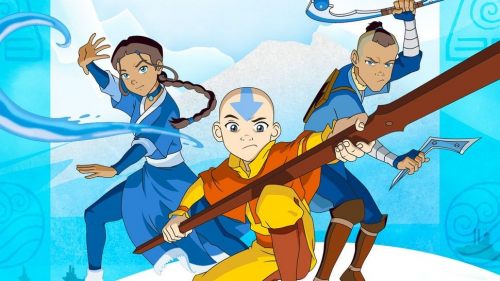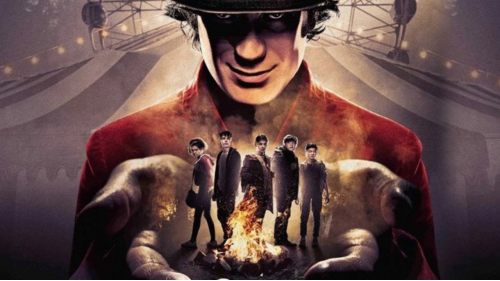On The Anniversary Of AVATAR: THE LAST AIRBENDER
The leads of Avatar: The Last Airbender are child-aged heroes bearing the burden of a prolonged war on their shoulders. Despite the show targeting the children demographic, its attention to detail, character, and writing gravitated to adult viewers and its grown child viewers reflect on the show fondly for all its depth.
Despite its anime appearance to causal animation viewers, Avatar is not anime but an American production that aired on Nickelodeon from 2005-2008 with anime-esque styles, mythical logistics, and backgrounds inspired by classic anime such as Studio Ghibli.
Four kingdoms: Water, Earth, Fire, and Air. Within those kingdoms, there lived Benders, possessing the ability to control the elements of their kingdom. But only one Avatar can master all four elements. In an elaborate reincarnation cycle reflecting the seasonal changes, an Avatar would be born a Waterbender, then reincarnate into an Earthbender, then a Firebender, and then an Airbender. And the cycle would repeat.
But all went lull when no new Avatar, destined to be an Airbender, emerged into public knowledge. And that’s when the Fire Nation moved in to subjugate its three rivaling kingdoms.
Two Water Tribe members, Katara and her brother Sokka stumble upon a child, Aang, in an iceberg, dressed in monk apparel with an arrow tattoo on his shaven head. She immediately becomes magnetized by his playful spirit but has to debrief him on the Hundred Year War. Within two episodes, he confesses he’s the Avatar, the international reincarnation of the messiah the world needs more than ever. And he never wanted the Chosen One mantle. More horrifying, Aang discovers the Fire Nation eliminated all of his fellow Air people in an attempt to slaughter the Avatar and was absent to stop the chaos. So duty calls and his friends help him find Masters to learn the other elemental powers necessary to defeat the evil Fire Lord.
Avatar: the Last Airbender sets up the usual broad binary of a Good Versus Bad story in an Everyone Versus Fire Nation story, but much like its Studio Ghibli inspirations, it paints depths of gray no conventional Hollywood could match. While the Fire Nation is the main antagonist with its elusive Fire Lord as the irredeemably evil tyrant with toxic fascist ideology, many episodes pay special meditation on the conflicted warfare nuances, such as delving into the innocent children of the Fire Nation who don’t know they’re being indoctrinated, the corrupt shades of the Earth Kingdom’s political system, backwards thinking of the Water Tribes, and even Aang has to compromise his old Air nomad traditions with the emergence of a modern world that could push them away.
It also turns out, the salvation of the Fire Nation lies in not just the defeat of its Fire Lord but in its exiled dishonored Prince who yearns for his father’s approval arguably more than the crown. Hunting after the young Aang is the exiled teenager Prince Zuko, with a horrifying scar gifted by his Darwinist Fire Lord father. With his lovable uncle Iroh, also a fellow exiled royal of some sort, Zuko ends up jointly sharing Aang’s narrative on equal footing despite his antagonist status, a phenomenal risk for a children’s programming. His character arc holds perhaps the most praised nuance of the war-narrative. His tale delves into the Fire Nation’s culture corrupted into fascist extremes and then indoctrinating a child into its grand delusions. “Growing up, we were taught that the Fire Nation was the greatest civilization in history, and somehow, the war was our way of sharing our greatness with the rest of the world,” the Prince later finds himself lamenting.
For a show with goofy slapstick and humor, it still commanded a heft in its themes of genocide, loss, forgiveness, philosophical ethics, spirituality, and cultural prominence. The ideas and logistics unfurl organically with each episode in a gradual flow as Aang and his friends master elemental powers, based on a diversity of real-life martial arts, and discover new techniques. Not every Asian American viewer like me would concur that the show is pitch perfect in its cultural representations, but I regard Avatar: The Last Airbender as the animated exemplar of nuanced cultural applicability rather than appropriation in its world building.
For an animated programming that treats its children like they’re adults, earnings adult fans while not losing the magic of being a children-driven show, I always viewed Avatar: The Last Airbender as enlightenment in itself.



